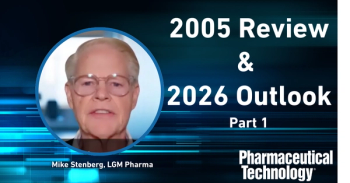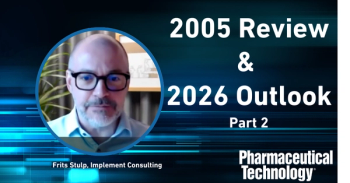
FDA Releases Guidance on Oncology Therapeutic Radiopharmaceuticals
Key Takeaways
- The FDA's draft guidance focuses on optimizing radiopharmaceutical therapy dosages for oncology during clinical development, excluding initial dosages in first-in-human trials.
- Differences between RPTs and EBRT in physical properties and treatment delivery affect the applicability of EBRT-derived organ absorbed dose limits to RPTs.
The guidance document provides recommendations for identifying an optimized dosage for radiopharmaceutical therapies for cancer treatment during clinical development.
FDA published a draft guidance document on Aug. 18, 2025 titled Oncology Therapeutic Radiopharmaceuticals: Dosage Optimization During Clinical Development that was created to assist drug sponsors with identifying an optimized dosage for radiopharmaceutical therapies (RPTs) for oncology indications during clinical development. The guidance addresses clinical development before submitting a marketing application for a new indication and usage. The new draft guidance should be used alongside recommendations provided in the August 2024 guidance, Optimizing the Dosage of Human Prescription Drugs and Biological Products for the Treatment of Oncologic Diseases.
The new draft guidance, however, does not cover selection of the initial RPT administered activity in first-in-human trials. Other aspects of clinical development of RPTs, such as dosimetry software, fixed administered activity dosing for a population versus dosing determined by personalized dosimetry, and theranostic co-development, are not addressed in the guidance document.
According to the FDA guidance document, RPTs share characteristics with external beam radiation therapy (EBRT) and systemic drug therapy. RPTs adhere to absorbed dose limits to critical organs determined by prior experience with EBRT. FDA states, however, that the differences between RPTs and EBRT in physical properties and treatment delivery lessen the applicability of EBRT-derived organ absorbed dose limits to RPTs. The optimized RPT dosage, therefore, may be greater than or less than a dosage limited by EBRT organ tolerances. Radiation absorbed dose limits also may differ between different isotopes or RPTs based on their physical properties. “Empiric determination of RPT-specific organ tolerances, or full assessment of dose-response relationships for a specific RPT, may not be possible if the evaluated dosages are limited based on EBRT organ tolerances,” the guidance document states (1).
Dosage optimization
The new draft guidance provides considerations for dosage optimization. According to the document, if there is adequate rationale that the optimized dose of an RPT cannot be identified at lower dosages, administered activities per cycle and/or cumulative RPT-administered activities that result in absorbed dosages exceeding EBRT organ tolerances can be studied in clinical trials of RPTs.
“Proposals to expose participants to RPT dosages that exceed EBRT organ tolerances or previously characterized RPT dosages could be justified based on existing clinical data or other approaches, as applicable, and should be discussed with FDA during formal meetings, including early in clinical development,” the agency states in the document (1). “Trials should include safeguards such as appropriate participant selection, trial design, safety monitoring, and radiation dosimetry evaluation.”
The guidance goes on the discuss participant population, trial design, safety monitoring, and dosimetry for dosage optimization trials.
Radiopharmaceuticals to treat cancer
According to
“There's so much [that goes] into pharmaceutical development into making something that can be manufactured at scale. It can sit on a shelf for a while. We can administer it to a patient, and it behaves in the way that we want,” Ritchie said in an interview with Pharmaceutical Technology®. “We're just learning how to apply what we learn from anybody drug conjugates into radio drug conjugates, so the chemistry of how to link this radio ligand to an antibody, something that will continue to evolve, and there's a real opportunity there to improve that, to improve the therapeutic activity. From the biology perspective, again, we're in our infancy and understanding what are the tumor types, or the molecular cohorts within a tumor that are more sensitive to radio ligands. Like any chemotherapy or any therapy, certain tumors will respond. Others will not. They'll develop resistance. And so really understanding the right cohorts of patients to treat is something that we're still learning, and I think we'll continue to learn as the clinical development of these programs evolves.”
PharmTech’s interview with Mike Ritchie can be found
References
- FDA. Oncology Therapeutic Radiopharmaceuticals: Dosage Optimization During Clinical Development. Draft Guidance for Industry (OCE, CDER, August 2025).
https://www.fda.gov/regulatory-information/search-fda-guidance-documents/oncology-therapeutic-radiopharmaceuticals-dosage-optimization-during-clinical-development - Haigney, S. The Evolving Field of Radiopharmaceuticals. PharmTech.com. Aug. 4, 2025.
https://www.pharmtech.com/view/the-evolving-field-of-radiopharmaceuticals
Newsletter
Get the essential updates shaping the future of pharma manufacturing and compliance—subscribe today to Pharmaceutical Technology and never miss a breakthrough.




